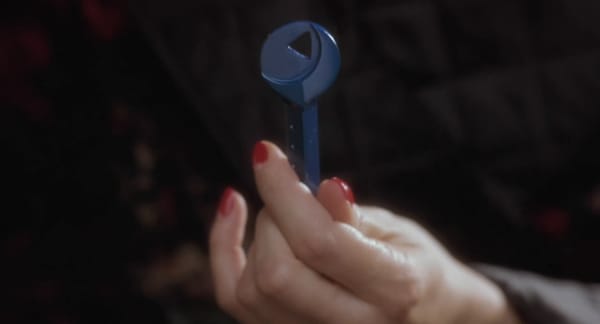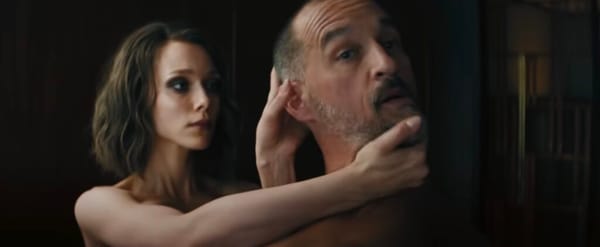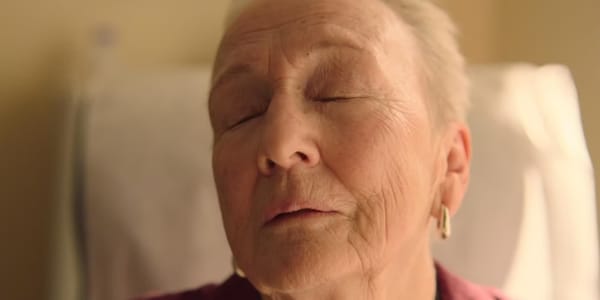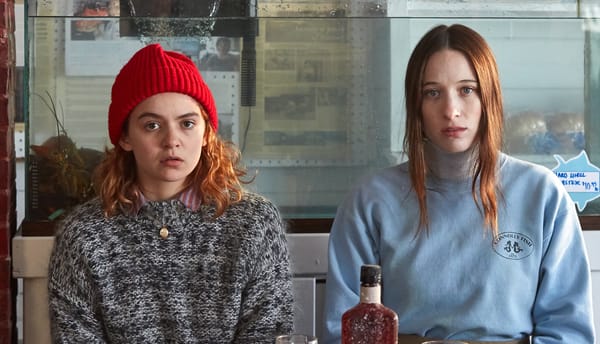Heavenly "'Father"
The greatest American movie (discuss) turns 50 this week.

Light a candle on your cannoli: Fifty years ago this week, on Tuesday March 14, 1972, “The Godfather” premiered at the Loew’s State Theatre in New York City. It rolled out to the rest of the country ten days later, has been through a number of re-releases, returned to theaters this February, and comes to VOD March 22 in a spiffy 4K print. Is it the greatest movie ever made? Maybe, probably – it’s a silly question. I do know that when I’m asked, as film critics often are, if I have a favorite movie, I answer, yes, I have two – the one everyone’s heard of and the one nobody’s heard of. The one everyone’s heard of is “The Godfather,” and I swear I’ve seen people visibly relax when they hear the title because they were probably afraid I was going to say some three-hour French film you can’t even see in this country. (If you’re wondering what my other favorite movie of all time is, it’s “Celine and Julie Go Boating” – a three-hour French film that, until last year, you couldn’t even see in this country. It’s available now on a Criterion DVD and The Criterion Channel, and I’ll write about it soon enough.)
There are people who don’t understand why “Citizen Kane” is such a big deal (savages) or profess to be bored by “Vertigo” (Philistines), but “The Godfather,” it seems, is the movie we can all agree on. Few pop objects have such a wide-ranging seal of approval or have worked their way so deeply into the culture. How deeply? Starting in April, “The Offer,” an eight-episode dramatic series about the making of “The Godfather,” will premiere on the Paramount+ streaming service.
Why is “The Godfather” so widely accepted as a pinnacle of commercial narrative cinema? For one thing, the story has Shakespearean bones: A king and his three sons, one a Hotspur, one a Fool, and the third a Machiavellian Henry V. The movie’s a three-hour slow reveal of the next head of the Family, with the hinge point that sequence of Michael outside the hospital, lighting a frightened man’s cigarette and marveling at his own steady hand. (It’s the scene in which he understands his strength and maybe his soullessness, and it’s very important that we and we alone are privy to the moment.) Also, the movie is sympathetic to its mobsters, but without Diane Keaton’s Kay as the story’s moral anchor it’d be a lovefest, and not in a good way.
There isn’t a single wrong casting choice – or maybe “The Godfather” has been in our blood for so long that the choices seem inarguable. The film resurrected Marlon Brando from a career grave and introduced him to the Brando 2.0 gang: Al Pacino, James Caan, Robert Duvall, John Cazale. As producer Albert Ruddy once said, “Marlon created those guys.” (And toss in Robert De Niro, who played the young Vito Corleone in “The Godfather Part II,” while you’re at it.) At various times in pre-production, Michael was slated to have been played by Warren Beatty, Robert Redford, Ryan O’Neal, Dustin Hoffman, Martin Sheen, Burt Reynolds, and Jack Nicholson. None of them would have had the eerie stillness Pacino brought to the role. (What happened to that Pacino, by the way? I wouldn’t mind having him back.) Cazale made five films before his 1978 death from lung cancer at 42, all of them Best Picture nominees; his performance(s) as Fredo cracks my heart wider with every viewing. Alex Rocco as Moe Greene, John Marley as studio head and horse fancier Jack Woltz, Richard Castellano as cheerful, lethal Clemenza – all indelible and eternal. (Does anyone else remember Castellano leveraging his “Godfather” fame to star in a short-lived TV sitcom called “The Super,” or did I hallucinate the whole thing?)
The camerawork is magisterial, with a legendary lighting scheme by cinematographer Gordon Willis, “The Prince of Darkness,” that puts us in shadowy rooms with cold-blooded men. The depiction of violence was equally revolutionary in that it was explicit but unsensationalized. Except for Sonny’s death at the tollbooths, the mayhem in “The Godfather” is workaday, messy, ugly, banal. What does a man look like when he’s been shot in the throat? How does garroting your brother-in-law to death in a car result in a broken windshield? The movie takes in all these small details with observational detachment.
I could go on about the production design (that opening wedding scene!) or the instantly evocative score, but it all comes down to Francis Ford Coppola, who took on a project no one thought would work and knew to ground it in family rather than crime. But Coppola also understood, even more than novelist Mario Puzo, that he was making a great American success story, perhaps the great American success story. “The Godfather” announces with its very first line of dialogue – “I believe in America,” spoken over a black screen – that it’s the Michael Corleones who made this country the citadel of hope and corruption that it is, whether they came on the Mayflower or arrived in steerage. Coppola took matters deeper and more forthrightly in the sequel, and many people prefer “Part II” to Part One. I’m not one of them. “The Godfather” stands on its own as a perfectly self-contained parable of power, greed, and blood ties. You could end with Al Neri closing the door on Kay’s face and walk away, and nothing about the film would be lessened.
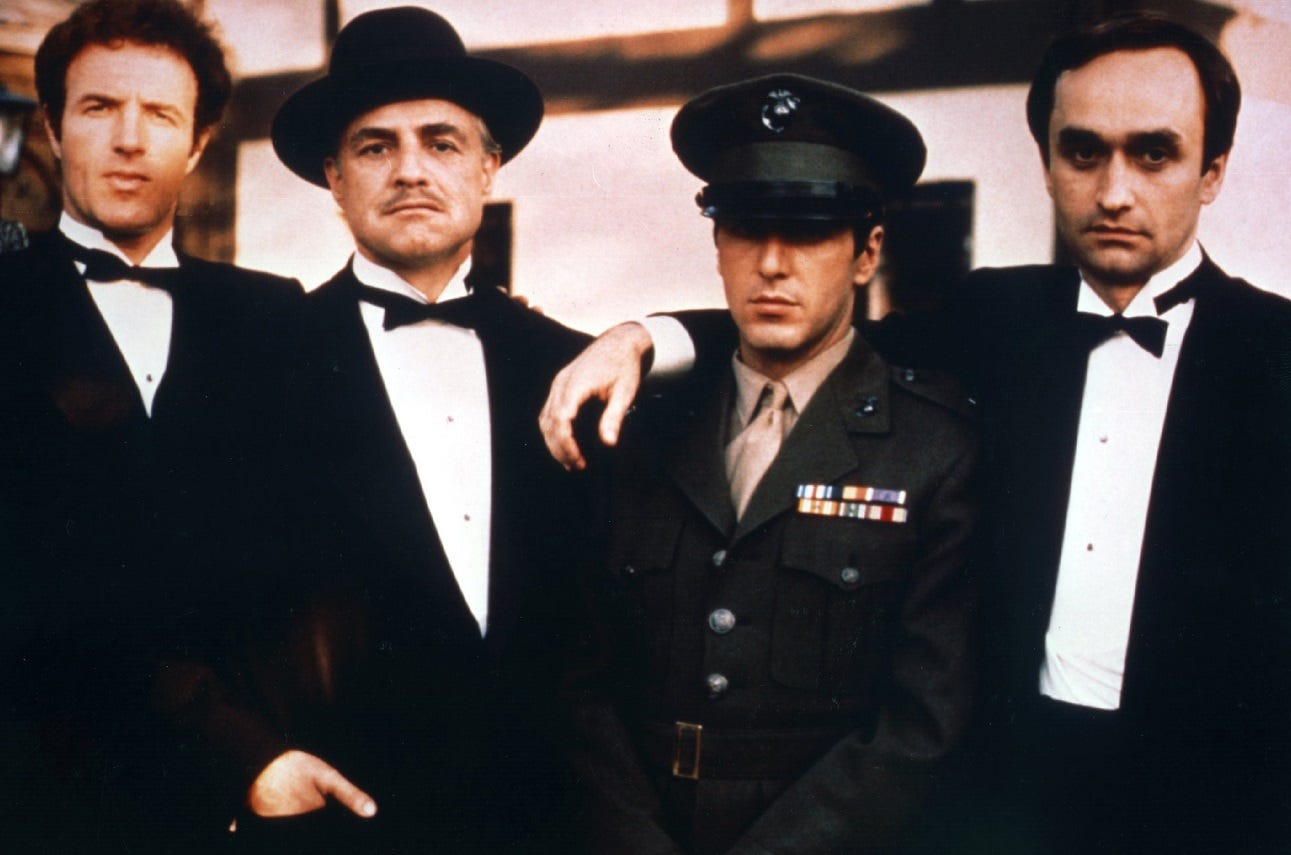
Looking at the film a half century later, it’s clearer than ever that it stands Janus-faced between the classic gangster movies of the studio era and the violent, psychologically rich crime dramas of today. To the first group, “The Godfather” was a response – a dose of cold-water naturalism to offset the melodrama of old Cagney movies and film noir. To the second, it’s a foundational myth. Every mob film made since walks in Coppola’s shadow, and “The Sopranos” used the movie as a blueprint from which to work: It knows we know all the references and it understands that modern-day made men model their slang and behavior on the Corleone clan. Fifty years ago, “The Godfather” was realism. Somewhere along the line, it became reality.
What are your memories of “The Godfather”? Did you see it when it came out or did you come to it later? What are your favorite characters and scenes? What’s the one line of dialogue that stays lodged in your skull? The comments section is open for business.
If you enjoyed this edition of Ty Burr’s Watch List, please feel free to share it with friends.
If you’re not a paying subscriber and would like to sign up for additional postings and to join the discussions, here’s how:
If you’re already a paying subscriber, I thank you for your generous support.


